Through colorful paintings, drawings, prints and vintage photographs, the David Owsley Museum of Art (DOMA) works to tell the stories of modern Mexican artists in its newest exhibit, “Mexican Modernity: 20th Century Paintings From The Zapanta Collection.”
Robert La France, director of DOMA, said the collection originally came from Los Angeles from Richard Zapanta, a fourth-generation Mexican-American. Once organized by the Cornell Fine Arts Museum in Winter Park, Florida, "Mexican Modernity” made its way to DOMA.
“[The exhibit] demonstrates the styles and progression … of the styles [from] several different generations of Mexican artists of the 20th century,” La France said.
Part of the reason DOMA officials brought the exhibit to campus, La France said, was to help Ball State continue to promote inclusiveness and diversity. Another factor was the exhibition's timeliness, as 2020 marks the 500th anniversary of the Mexican colonization.
“A show like [‘Mexican Modernity’] allows [DOMA] to connect with a whole group of people, especially those studying languages, history and humanities,” La France said. “I hope it also helps [DOMA] connect with the whole generation of Spanish-speaking students that are [at Ball State] and those who might have Mexican heritage as well.”
DOMA will host the exhibits “Mexican Modernity” until May 3 and “Mexican Modernity: IMPACT” until May 17.
Because “Mexican Modernity” has the capability of connecting with a large range of individuals, students will be able to engage with the exhibit through class curriculum. Obed Frausto, assistant professor of honors humanities, has taken his students to view “Mexican Modernity,” which he believes has “the best of the best of Mexico,” including artists such as Frida Kahlo.
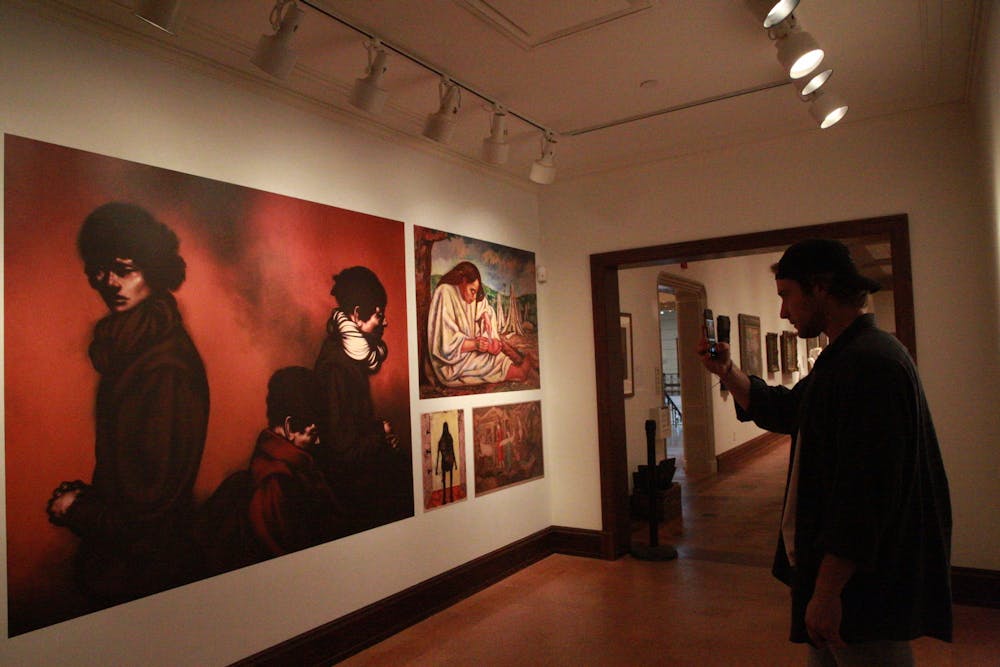
Sophomore marketing major David Elmore stops to take a photo of the prints in the "Mexican Modernity: 20th Century Paintings from the Zapanta Collection" exhibit Feb. 23, 2020 in the David Owsley Museum of Art. The exhibit is located both upstairs and downstairs in the museum. Brooke Kemp, DN
Frausto said he was interested in the exhibit because, as a professor of humanities, classroom conversations tend to center around why individuals make art. In particular, Frautso said he believes artists in the 20th century were trying to answer the question, “What does it mean to be Mexican?”
“Mexican Modernity’s” complementary exhibit, “Mexican Modernity: IMPACT,” also shows how Mexican culture has impacted East Central Indiana, as the exhibit also consists of loaned art from the Richmond Art Museum, showing how Indiana-born artists adopted Mexican muralists’ styles, according to DOMA’s website.
La France said planning the exhibit — which tells the story of Leslie Curtis Kitselman, a Muncie heiress who married a Mexican artist — allowed him to explore the Ball family’s art collection.
“[Mexican Modernity: IMPACT shows] some examples of how the Ball family collected works of art by Diego Rivera and David Alfaro Siqueiros,” La France said. “The Ball family collected their works even though the works were Marxist and the Ball family [was] capitalist.”
Frausto said he believes the exhibits could help members of the Ball State community break down barriers that have perhaps been created by the current political conversation between U.S. and Mexican relations.
“[The exhibits] put close an image that is not political [but] is a more humanitarian, humanistic perspective of the people from Mexico,” Frausto said. “It allows us to make more connections and have more empathy [for those from Mexico]. I hope [the Muncie community] can be a part of [the exhibit], and feel those connections and maybe build a bridge of empathy — a bridge of understanding to a culture, a society we are neighbors [to].”
As a professor himself, Frausto said he has seen the break down of barriers between Mexican and American cultures among his own students, as they have asked to hear more about Mexico or be taught Spanish.
“Those who want to engage with this exhibit can get much out of it,” Frausto said. “The exhibit is a small piece of Mexican culture, but that piece has so much value.”
Contact Mary Stempky with comments at mstempky@bsu.edu.

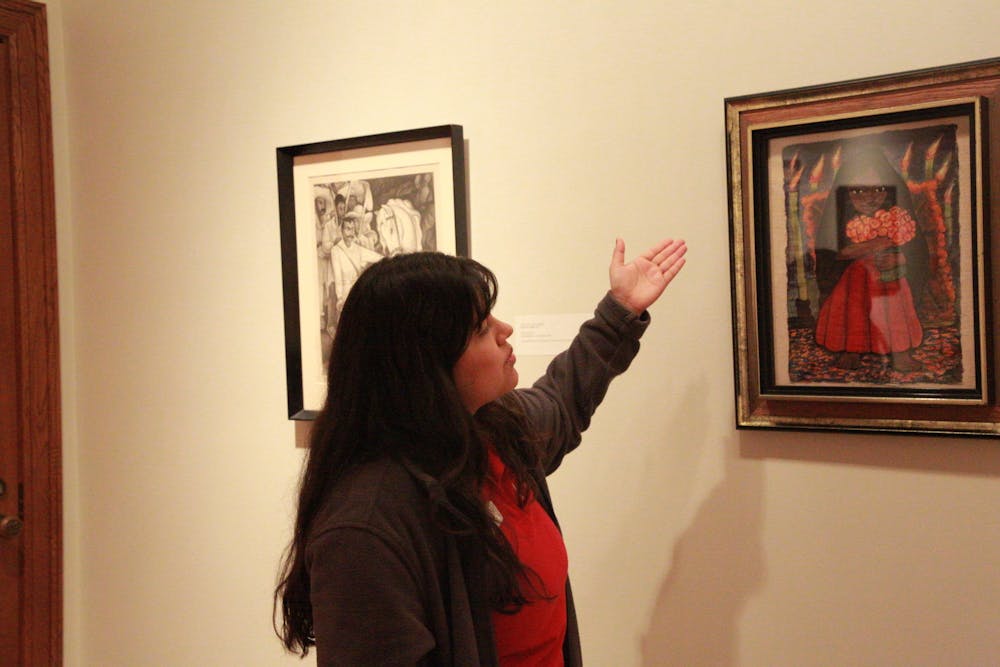
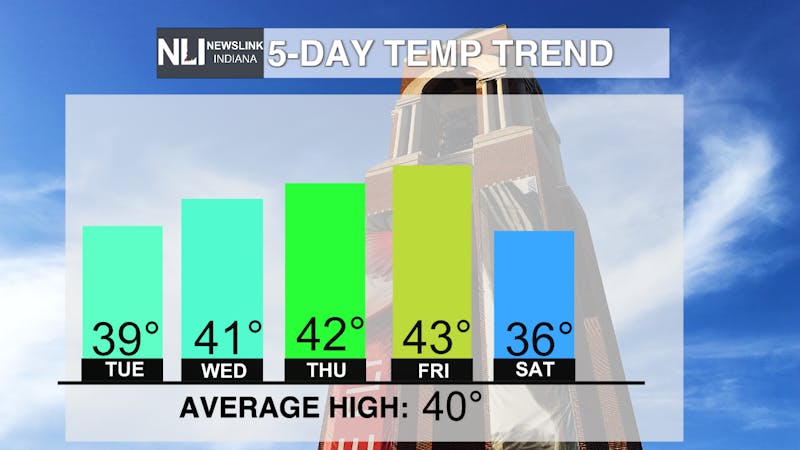
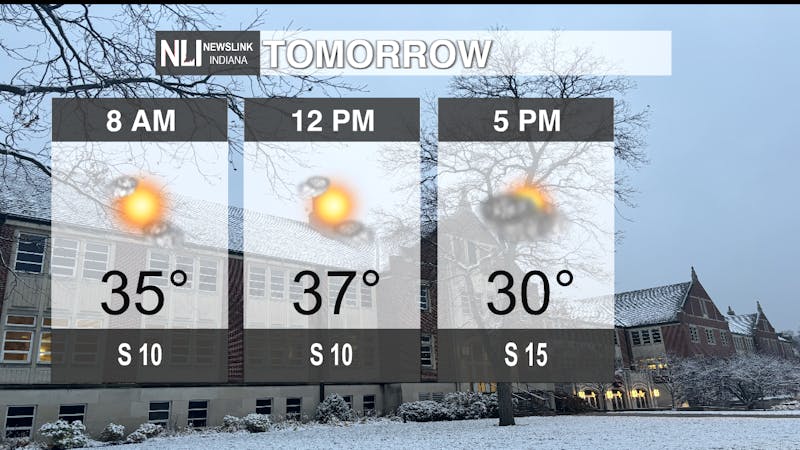
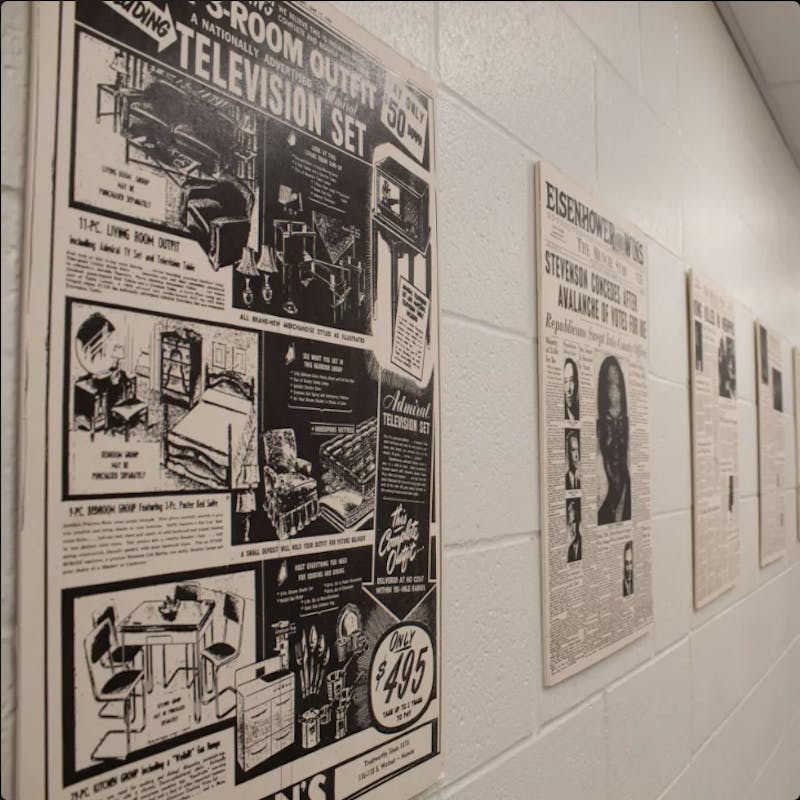
The Daily News welcomes thoughtful discussion on all of our stories, but please keep comments civil and on-topic. Read our full guidelines here.